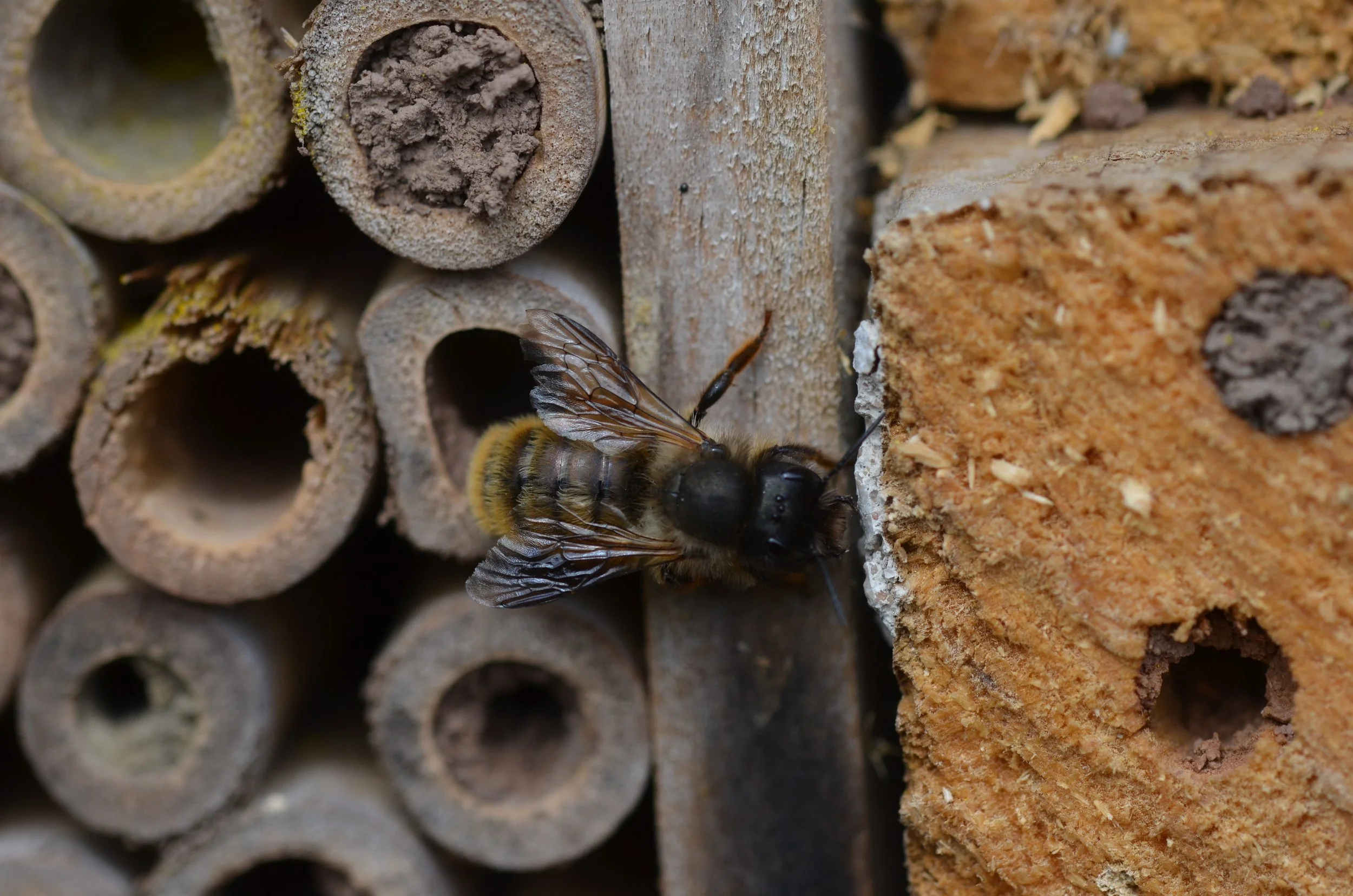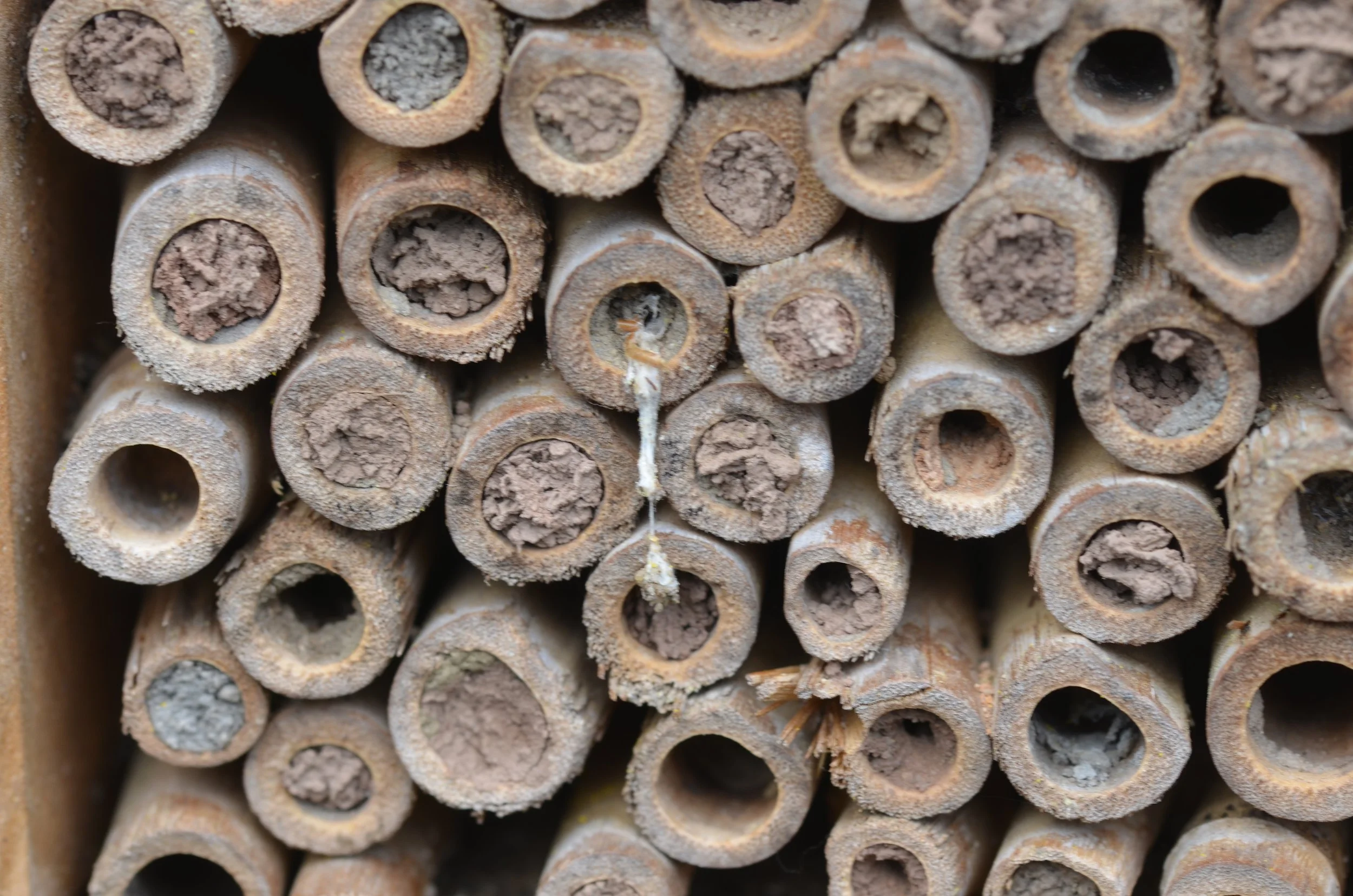Red mason bees
It’s Buglife National Solitary Bee Week as well as being Nature Friendly Farming Week. And, in this week of weeks it’s the height of the red mason bee (Osmia bicornis) breeding season.
Red mason bees aren’t colonial like honey or bumble bees, but they are highly-social, occupying sites with many other females but each choosing their own tube as a nursery for their young.
They are similar in appearance to tawny mining bees (Andrena fulva) that are active earlier in the season and who create little ‘volcanoes’ of soil in patches of bare earth above their subterranean nurseries (see 2 April 2025 post).
Female red mason bee..
The busy females are drawn to the bamboo tubes in our repaired, south-facing bee hotels to lay their eggs. Bee hotels have become relatively cheaply available in the ‘middle aisle’ of economy supermarkets.
Repaired bee hotel
In the modern world, we do all we can to provide sites as close to their natural ones as possible to give them a ‘leg-up’, In the days of yore, when there was sufficient dead wood with sufficient holes from mining insects, the mason bees would have used these natural sites.
The bees are very selective in choosing potential nurseries. Holes drilled into logs and faced south have been explored but not frequently used. Holes of the same size and depth in sawn timber fixed into the bee hotels at the same height and only thirty centimetres away have proved very popular - as you can see from the capping. Is it the close proximity of other bees using bamboo tubes that has made the sawn-timber homes more successful?
Bamboo canes…
Capped to protect young.
Perhaps an experiment for next year..?
The mother bees have been provisioning their eggs with nectar and capping the tubes with mud.
Fascinating to watch.



